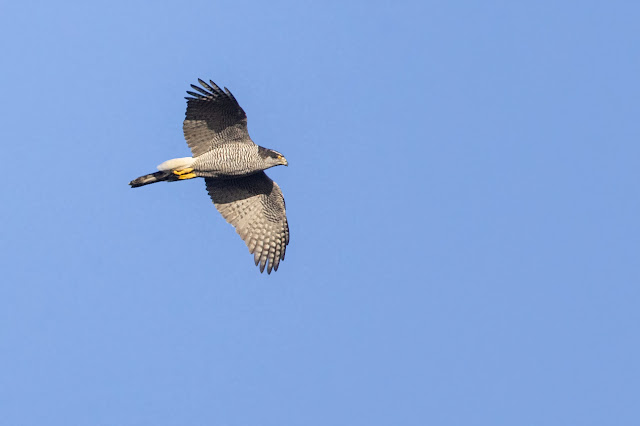The list for the last 5 days now stands at 46 which isn't bad and there are still a few commoner species still missing plus there is the promise of a few spring migrants just around the corner, if it would just warm up a bit.
I'm averaging 33 to 37 species a day, no doubt helped by the decent weather.
A pair of Sparrowhawk were displaying over the garden yesterday, this is the male.
 |
| Sparrowhawk |















